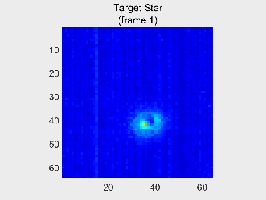
Click on the image for larger animationThis animated gif shows a series of images from a single observation of a star by the ASTERIA spacecraft. In the first few images, the star appears to move as ASTERIA slews to and then locks onto the target star. Throughout the remainder of the frames, the spacecraft remains locked on the target star.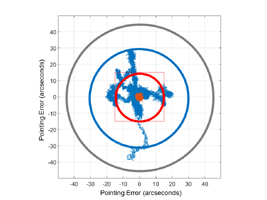
Click on the image for larger versionThis graph shows the precise position of a star as seen by ASTERIA. The colored tracks show the path of ASTERIA's pointing system as it attempts to hold steady on a target. The blue tracks show the spacecraft's pointing ability using coarse pointing control, but to reach the desired level of stability, ASTERIA engages what is known as two-stage fine pointing control, shown in orange. Arcseconds are a measure of angle on the sky, used to measure the apparent size of objects or and distances that objects travel.(The full moon is about 1800 arcseconds wide).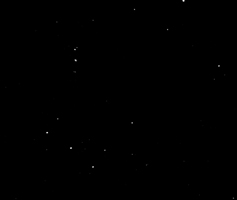
Click on the image for larger versionA snapshot of the sky taken by ASTERIA, showing the spacecraft's full field of view; the constellation Orion is visible in the bottom left. Images from the satellite are cropped when scientists want to monitor an individual star.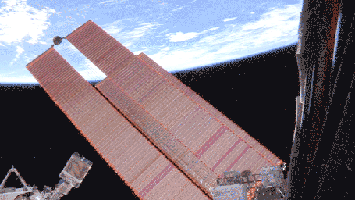
Click on the image for larger animationASTERIA was deployed from the International Space Station on November 20, 2017.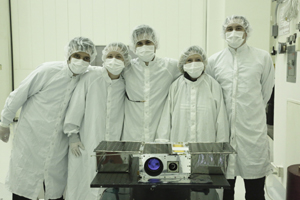
Click on the image for larger versionMembers of the ASTERIA team prepare the petite satellite for its journey to space
(l-r: Robert Bocchino, Amanda Donner, Cody Colley, Alessandra Babuscia, and Peter Di Pasquale).ASTERIA, or the Arcsecond Space Telescope Enabling Research in Astrophysics, weighs only 22 pounds (10 kilograms). It carries a payload for measuring the brightness of stars, which allows researchers to monitor nearby stars for orbiting exoplanets that cause a brief drop in brightness as they block the starlight.
The ASTERIA mission utilized commercially available CubeSat hardware where possible, and is contributing to a general knowledge of how those components operate in space.
The ASTERIA satellite, which was deployed into low-Earth orbit in November, is only slightly larger than a box of cereal, but it could be used to help astrophysicists study planets orbiting other stars.
ASTERIA was developed under the Phaeton Program at JPL. Phaeton provides early-career hires, under the guidance of experienced mentors, with the challenges of a flight project. ASTERIA is a collaboration with the Massachusetts Institute of Technology in Cambridge; where Sara Seager is the principal investigator.
Mission managers at NASA's Jet Propulsion Laboratory in Pasadena, California, recently announced that ASTERIA has accomplished all of its primary mission objectives, demonstrating that the miniaturized technologies on board can operate in space as expected. This marks the success of one of the world's first astrophysics CubeSat missions, and shows that small, low-cost satellites could be used to assist in future studies of the universe beyond the solar system.

